1. Workup
1.1. Labs
1.1.1. Biliary labs
1.1.1.1. Bilirubin
1.1.1.2. Alk Phos
1.1.1.3. GGT
1.1.2. Liver labs
1.1.2.1. Transaminases
1.1.2.2. Coag studies
1.1.3. Tumor markers
1.1.3.1. Mostly for PSC patients
1.1.3.2. CA 19-9
1.1.3.2.1. >100 U/mL
1.1.3.2.2. 75% sensitivity
1.1.3.2.3. 80% specificity
1.1.3.3. CEA
1.2. Imaging
1.2.1. Initially
1.2.1.1. US
1.2.1.1.1. Biliary duct dilatation and larger hilar lesions
1.2.1.2. CT
1.2.1.2.1. Biliary duct dilatation, large lesions, LAD, level of obstruction
1.2.2. MRCP
1.2.2.1. Look at hepatic parenchyma
1.2.2.2. Good for looking at vasculature
1.2.3. Cholangiography
1.2.3.1. ERCP
1.2.3.1.1. Cytology
1.2.3.1.2. Palliative stenting
1.2.3.2. Percutaneous Transhepatic Cholangiography
1.3. Procedures
2. Epidemiology
2.1. Frequency
2.1.1. US
2.1.1.1. 2500 cases
2.1.1.2. Females>60 years
2.1.1.2.1. Intrahepatic
2.1.1.2.2. Intrahepatic
2.1.2. International
2.1.2.1. Highest incidence in Japan and israel
2.2. Morbidity/Mortality
2.2.1. 90% not eligible for curative resection
2.2.2. Overall survival ~6 months
2.3. Sociodemographics
2.3.1. Race
2.3.1.1. Native Americans have 6x higher rate than non-NA
2.3.1.2. Asian descent due to endemic chronic parasitic infestation
2.3.2. Sex: female predilection, especially among those diagnosed young
2.3.3. Age: 60s and 70s
3. What is it?
3.1. Malignancy of biliary duct system
3.2. Organized geographically
3.2.1. Intrahepatic
3.2.1.1. Least common
3.2.2. Extrahepatic
3.2.2.1. Perihilar
3.2.2.1.1. Klatskin: bifurcation of L and R hepatic ducts
3.2.2.1.2. Most common
3.2.3. Distal Extrahepatic: upper border of pancreas to ampulla
3.3. >90% adenocarcinomas, rest squamous
4. Presentation
4.1. History
4.1.1. Clay-colored stools
4.1.2. Jaundice
4.1.2.1. Occurs late in perihilar or intrahepatic
4.1.2.2. Usually occurs in tumors in CBD or CHD
4.1.3. Pruritus
4.1.3.1. Usually preceded by jaundice
4.1.4. Bilirubinuria
4.1.5. Weight loss
4.1.5.1. 1/3 of patients at time of dx
4.1.6. Abdominal pain
4.1.6.1. Common
4.1.6.2. Dull ache in RUQ
4.2. Physical
4.2.1. May see Courvoisier's Sign
4.2.1.1. Painless palpable gallbladder in the setting of jaundice
4.2.2. Hepatomegaly in 25% of patients
5. Pathophysiology
5.1. Potential causes
5.1.1. long-standing inflammation
5.1.1.1. PSC
5.1.1.2. Chronic parasitic infection
5.1.1.3. Chronic ulcerative colitis and chronic cholecystitis associated with intrahepatic
5.1.2. Infections
5.1.3. IBD
5.1.4. Chemical exposures
5.1.4.1. Aircraft, rubber, and wood-finishing
5.1.5. Congenital
5.1.5.1. Choledochal cyst, Caroli dz
5.1.6. Rare
5.1.6.1. bile duct adenomas, biliary papillomatosis, A1A deficiency
5.2. Slow growing
5.2.1. Infiltrate ductal walls
5.2.2. Dissect along tissue planes
5.2.3. Local extension
5.2.3.1. liver
5.2.3.2. porta hepatis
5.2.3.3. regional lymph nodes
5.3. Cholangitis is possible complication
5.3.1. abx
5.3.2. biliary drainage
